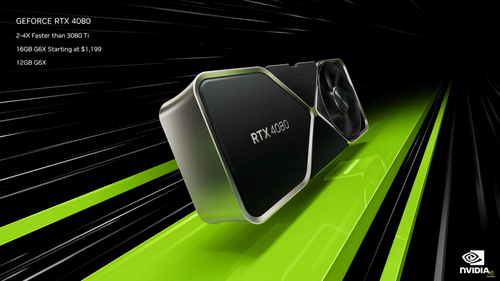The Nvidia RTX 4080 Super is one of the latest graphics cards, launching during CES 2024 week alongside a slew of other Super GPUs.
But what does that ‘Super’ name actually signify? And is there much difference between the standard RTX 4080 card and the Super variant?
We’ve created this guide to answer all of those questions, so keep reading on for the full breakdown between the Nvidia RTX 4080 Super and the Nvidia RTX 4080.
RTX 4080 Super has 5% more CUDA Cores
The biggest difference between the two graphics cards is that the Nvidia RTX 4080 Super has 5% more CUDA Cores than its vanilla counterpart.
CUDA Cores have a great impact on performance, with the greater core count typically resulting in a greater performance. As a result, it’s significant that Nvidia has been able to stuff more CUDA Cores onto the Super model.
Nvidia has confirmed that the RTX 4080 Super will feature 10,240 CUDA Cores. For reference, the Nvidia RTX 4080 has just 9728 CUDA cores. Of course, it’s not a huge increase, so expect a modest performance lift as a result.
RTX 4080 Super has a higher boost clock speed
In order to maximise the performance gains, Nvidia has also increased the boost clock speed for the RTX 4080 Super. The new graphics card is capable of up to a 2.55GHz clock speed, while the standard RTX 4080 is only able to reach a 2.51GHz.
This ensures the Super variant is able to access its memory quicker, resulting in a performance boost when playing games or even engaging in creative tasks.
Interestingly, both graphics cards share the same base clock speed of 2.21GHz, so it’s best to think of the Super variant as being an overclocked version of the RTX 4080, at least when it comes to clock speeds. Although the extra CUDA Cores help to boost the performance that little bit further.


There’s no difference in terms of video memory
This shouldn’t really come as a surprise, but there are far more similarities between the Nvidia RTX 4080 and its Super successor than there are differences.
Both cards are based on the same Lovelace architecture, although that’s a given since they’re part of the same generation. More interestingly, Nvidia hasn’t increased the video memory for the Super card, with both seeing 16GB GDDR6X with a 256-bit memory interface width.
As a result, you shouldn’t expect an enormous performance difference between the two cards. If you own an RTX 4080, there is little reason to upgrade to the Super version. Check out our Best Graphics Card guide for more options.
No difference in launch price
Nvidia has decided to stick to the same price when launching the RTX 4080 Super, which means it will be available in stores for $999 – the exact same price as the standard RTX 4080 when it first launched back in 2022.
As a result, the Nvidia RTX 4080 Super will actually be replacing the RTX 4080, with the latter becoming unavailable to buy once stock runs out. This shows that Nvidia views the RTX 4080 Super as replacement to the standard card, rather than a direct successor that can coexist with the card it’s based on.

